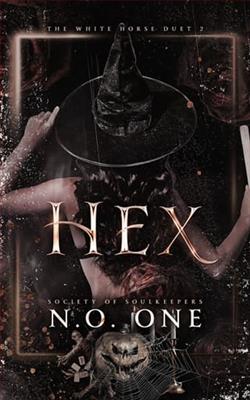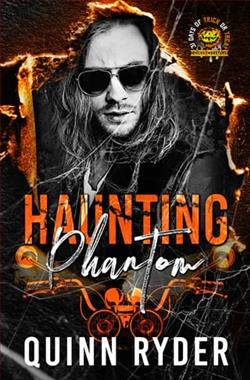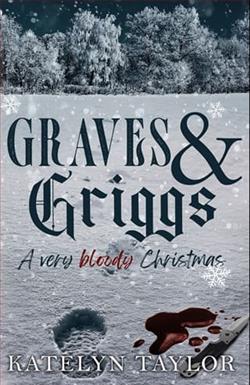Page 1 of W is for Wasted (Kinsey Millhone 23)
PROLOGUE
Two dead men changed the course of my life that fall. One of them I knew and the other I’d never laid eyes on until I saw him in the morgue. The first was Pete Wolinsky, an unscrupulous private detective I’d met years before through Byrd-Shine Investigations, where I’d served my apprenticeship. I worked for Ben Byrd and Morley Shine for three years, amassing the six thousand hours I needed for my license. The two were old-school private eyes, hard-working, tireless, and inventive. While Ben and Morley did business with Pete on occasion, they didn’t think much of him. He was morally shabby, disorganized, and irresponsible with money. In addition, he was constantly pestering them for work, since his marketing skills were minimal and his reputation too dubious to recommend him without an outside push. Byrd-Shine might subcontract the odd stretch of surveillance to him or assign him a routine records search, but his name never appeared on a client report. This didn’t prevent him from stopping by the office without invitation or dropping their names in casual conversations with attorneys, implying a close professional relationship. Pete was a man who cut corners and he assumed his colleagues did likewise. More problematic was the fact that he’d rationalized his bad behavior for so long it had become standard operating procedure.
Pete Wolinsky was gunned down the night of August 25 on a dark stretch of pavement just off the parking lot at the Santa Teresa Bird Refuge. The site was right across the street from the Caliente Café, a popular hangout for off-duty cops. It might seem odd that no one in the bar was aware that shots were fired, but the volume on the jukebox exceeds 117 dB, roughly the equivalent of a gas-powered chainsaw at a distance of three feet. The rare moments of quiet are masked by the high-pitched rattle of ice cubes in dueling blenders where margaritas are whipped up at a rate of one every four and a half minutes.
Pete’s body might not have been discovered until daylight if it hadn’t been for an inebriated bar patron who stepped into the shadows to take a leak. I heard about Pete’s death on the morning news while I was eating my Cheerios. The TV set was on in the living room behind me, more for the company than the content. I caught his name and turned to catch a night shot of the crime scene blocked off by yellow tape. By the time the news crew had arrived, his body had been loaded into the ambulance in preparation for transport to the coroner’s office, so there was really nothing to see. In the harsh glare of artificial light, a somber female reporter recited the bare facts. Pete’s immediate family must have been notified by then or she wouldn’t have mentioned him by name. Pete’s death was a surprise, but I can’t say it was a shock. He’d often complained of sleeping poorly and had taken to wandering the streets at all hours. According to the reporter, his wallet had been stolen along with his watch, a knock-off Rolex with a faux-platinum band. I guess robbers these days can’t distinguish the genuine article from the fake, which meant that Pete’s death wound up being more about impulse or cheap thrills than profit. He was a man with a propensity for risk, and it was only a matter of time before Lady Luck caught up with him and pushed him off the cliff.
The story about the second dead man is more complex and takes longer to articulate, especially since the facts emerged slowly over a matter of weeks. The coroner’s office called me on a Friday afternoon, asking if I could ID a John Doe who had my name and phone number on a slip of paper in his pocket. How could I resist? Every good mystery takes place on three planes—what really happened; what appears to have happened; and how the sleuth, amateur or professional (yours truly in this case), figures out which is which. I suppose I could put everything in perspective if I explained how it all turned out and then doubled back to that phone call, but it’s better if you experience it just as I did, one strange step at a time.
This was October 7, 1988, and it looked like things were as bad as they were going to get. On the national front, congressional spending was a whopping $1,064.14 billion and the federal debt was topping out at $2,601.3 billion. Unemployment hovered at 5.5 percent and the price of a first-class postage stamp had jumped from twenty-two cents to twenty-five. I tend to disregard issues over which I have no control. Like it or not, the politicians don’t consult me about economic policies, budget cuts, or the gross national product, whatever that is. I might voice an opinion (if I had one), but as nearly as I can tell, nobody pays the slightest attention, so what’s the point? My only hope is to be the master of my own small universe, which is centered in a Southern California town ninety-six miles north of Los Angeles.
My name is Kinsey Millhone. I’m a private investigator, female, age thirty-eight. I rent office space in a two-room bungalow with a kitchenette and a bathroom on a narrow side street in the heart of Santa Teresa, population 85,810, minus the two dead guys. Since I’m the sole proprietor and lone employee, I operate on a modest scale, supporting myself by doing missing-persons searches, background checks, witness location, and the occasional service of process. From time to time I’m hired to establish paper trails in legal, financial, or property disputes. On a more personal note, let me say that I believe in law and order, loyalty, and patriotism—old-fashioned values that might seem woefully out of date. I also believe in earning an honest living so I can pay my taxes, cover my monthly bills, and tuck any surplus into my retirement account.







